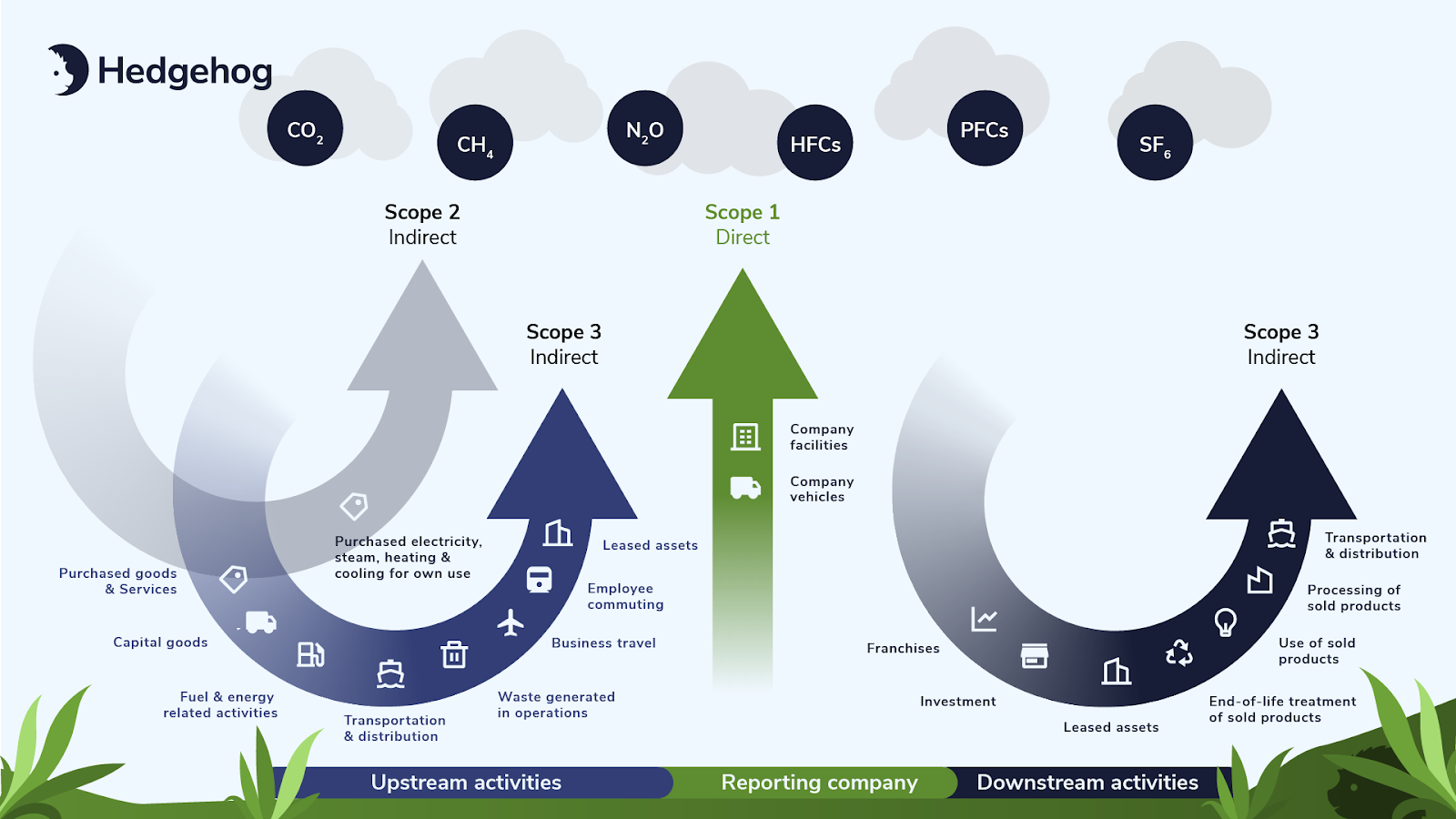Reporting about sustainability is evolving fast, driven by changes in regulations, supply chain demand, and customers expectations. For EU-based SMEs, knowing what's going on helps you to be prepared and make the right decisions around carbon accounting. In this article we guide you through the key trends you need to know.
An increasing focus on scope 3 data
Our consultants have observed a significant trend: a sharp increase in the focus on Scope 3 emissions. While Scope 1 (direct emissions) and Scope 2 (emissions from purchased energy) are relatively straightforward to measure, Scope 3 covers all other indirect emissions throughout a company's value chain.
Scope 3 is important because it includes a wide range of activities, from the raw materials a company purchases to the emissions from customers using its products. For a long time, collecting this data was a major challenge, as it often required information from suppliers further up the supply chain. It is more time consuming or difficult to get.
Now, however, we are seeing a clear shift. Stakeholders, investors, and large corporate clients are demanding greater transparency. This has led to a dramatic increase in requests for detailed Scope 3 data from SME´s.
According to the GHG Protocol, Scope 3 emissions often represent the largest portion of a company's total carbon footprint, frequently more than 80%. This means that even if your business isn't directly required to report emissions, your larger clients will need this data from you for their own reporting. Getting a handle on your Scope 3 emissions is a crucial first step toward future-proofing your business.
“Many companies are improving their initial greenhouse gas (GHG) assessments, moving from less precise methods (like spend-based data) to more accurate ones (like activity-based or supplier-specific data). As a result, small and medium-sized enterprises (SMEs) will increasingly need to provide detailed, accurate carbon footprints for their products to meet the demands of their larger clients.” - François Mahé, Sustainability Manager
To learn more about the different scopes, read our detailed explanation: scope 1, 2 and 3 explained: why scope 3 is more important than you think.

Changing regulations and voluntary reporting
It was significant news: the scope of one of the EU’s main reporting obligations, the CSRD, was recently considerably reduced. Now, only larger companies are still required to extensively report on their social and environmental performance. For smaller businesses, this reporting has become voluntary.
Despite this shift towards voluntary reporting for SMEs, the CSRD remains highly relevant for them. Here’s why: large companies that are required to report will increasingly ask their SME suppliers for sustainability data. This creates a de facto requirement for many SMEs to report on sustainability in order to maintain their business relationships.
This has opened the door to a more voluntary alternative, such as the Voluntary SME Reporting Standard (VSME). This framework provides SMEs with a structured way to report their sustainability data without bearing the full burden of mandatory compliance. It still aligns with CSRD principles but offers simplified and proportionate guidelines to reduce complexity.
The VSME is therefore a valuable tool for any SME looking to publish its first sustainability report or respond to requests for environmental data from business partners.
Our experts can provide guidance on the VSME, helping your company develop a report that meets stakeholder expectations and future-proofs your business.
Advancements in technology
Manually tracking carbon emissions with spreadsheets is becoming impossible, especially with complex scope 3 data. The good news? Technology is evolving to meet this challenge. The rise of AI in carbon accounting is a game-changer for SMEs.
New software solutions are automating data collection, analysis, and reporting. For instance, AI-powered platforms can analyse procurement data to estimate supply chain emissions. At Hedgehog, our Carbon Platform simplifies this, letting SMEs efficiently measure and manage their footprint without needing a dedicated team of sustainability experts. We have dedicated an article about the role of AI in Carbon Accounting tools.
Preparing for the future
Some interesting developments around carbon accounting have been taking place recently. We have observed a clear shift from scope, changes in important regulations and new technologies entering the stage. All these shifts are important to take into account when you start carbon footprinting.
Familiarise yourself with upcoming trends, and explore the technology that can help you on your journey. If you are ready to take the next step and understand your company's carbon footprint, explore how Hedgehog’s Carbon platform and consulting services can provide you with the clarity and tools you need to succeed.
Navigating the rapidly changing world of carbon accounting can feel daunting for SMEs. This guide simplifies the five key trends you need to know to stay compliant and competitive.
The world of sustainability reporting is evolving fast, driven by new regulations, supply chain pressures, and market expectations. For EU-based SMEs, understanding these shifts is crucial for staying compliant and competitive.





